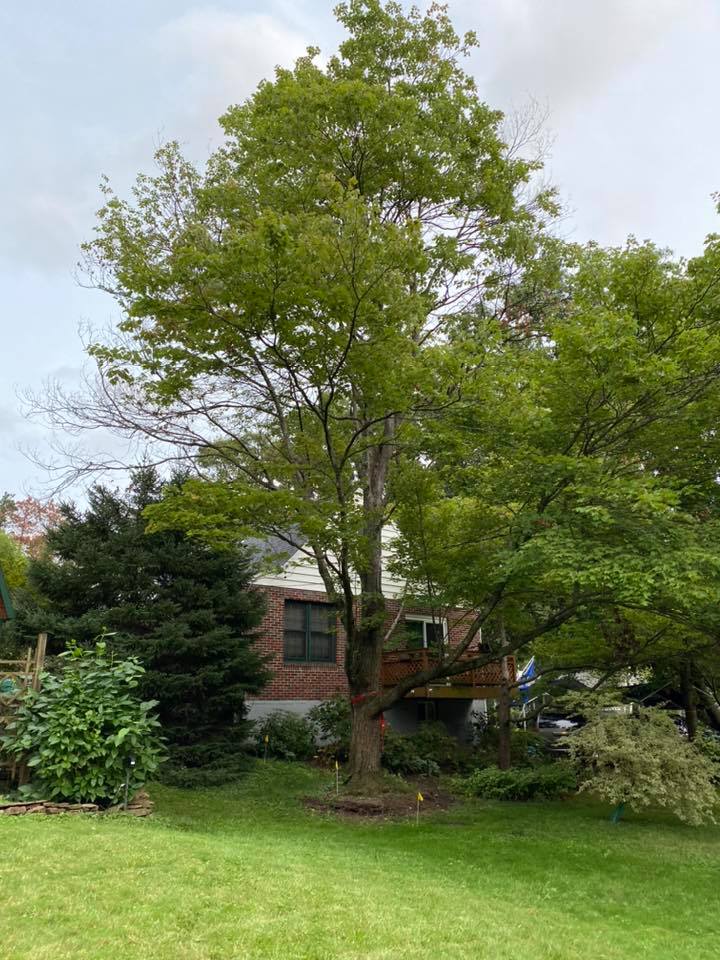
It was Ralph Waldo Emerson who said, “The creation of a thousand forests is in one acorn.”
For many gardeners, there is a special bond between themselves and their trees, which Emerson certainly embraced, too. Some trees were already in the landscape when they moved in and were enjoyed for a lifetime. Others were planted and appreciated for decades as they grew.
Trees are often mourned when they are lost to storms, disease or old age.
My friend Charlene Lepant wrote about the pain of losing an “old friend” here. In the story, she says this of her 17-year-long relationship with a maple tree, “I cried in front of grown men today as I watched them taking you apart in two hours after taking so many years to grow so big. Thank you for giving me such pleasure. I enjoyed watching your covering change color each fall, and I watched with great anticipation as you grew new clothes to wear each spring.”
My own affection for trees in the landscape goes back to my first garden, where my children played basketball under a huge rose of Sharon. I brought seedlings from that tree to my current garden. The tree is reviled by many for its abundance of seedlings and invasive nature, but it holds a special place in my heart. As does a 100-foot-tall dawn redwood, which was love at first sight when moving to this garden over two decades ago (Although I was terrified soon after to see my 12-year-old about halfway up that tree one day).
Of all the things being planted this fall, trees benefit the most from going into the ground during this season. Shorter days and cool temperatures are conducive to root growth instead of top growth, meaning the tree will put all its energy into getting established and not worry about putting on leaves or trying to make flowers. Trees can be planted through fall and into early winter until the ground freezes solid. Many garden centers and nurseries will have them on sale now too.
According to the Davey Tree Expert Company, trees reduce stress, can help patients heal, add to property value, are great for the environment and even save lives by reducing pollution.
When thinking about what tree to plant, the first step is to recognize where the tree will live and how much space is available. There’s nothing sadder than driving by a home and seeing a tree that will obviously outgrow its current site. The problem is especially prevalent in new construction. The instant landscape is put into place, and then the trees need to be removed five years later.
It’s all about putting the right tree in the right place and having patience for that tree to mature. That means looking at the soil, the amount of sun, and of course, the mature width and height of the tree in question. Also, consider if deer will eat a sapling to the ground.
Once that’s decided, the fun of choosing the tree is next.
I’m asked over and over again, “What should I plant?”
I’ve listed some of my favorites at the end of the story, but my answer is always, “Grow what you love.” When you do that, you’ll rarely be disappointed.
It can be hard work to plant a large tree, as the planting hole needs to be at least two times the size of the root ball. I preach about adding compost when planting most plants, but that’s not what we do for trees. Filling a planting hole with compost can make the roots too happy and they might not venture out into the native ground as they should.
Try and find a spot that has decent dirt, planting in pure clay is a recipe for disaster. Filling a planting hole with water and seeing how long it takes to drain will be a good indicator of the quality of the planting area. Upon returning in 20 minutes to find lots of water in the hole, means finding a new place for the tree. Most trees need good drainage.
On rare occasions, a tree must be planted in a certain spot, but the soil is awful. Some soil amendments can be added to the dirt that’s there, but the planting hole should be even bigger, and the compost should be mixed with the soil that will be used to backfill the planting hole.
Most trees are fine in average garden soil.
Many trees are killed at planting time by being planted too deep. After digging the hole, use a shovel handle to gauge if the depth is correct by comparing it to the tree before planting. The root flare of the trunk should never be covered with soil.
When placed properly, add the backfill from the hole and water the newly planted tree. If rain is scarce, it should be soaked once a week until the dirt freezes solid in mid-winter. At that point, the tree cannot uptake any more moisture. If it didn’t get the water it needed before that happens, it can have problems over the winter and might not come out of the gate in spring as vigorously as it should.
The other thing that’s killing our trees is volcano mulch. A trunk should never be touched by mulch. Properly applied mulch should look like a donut — not a volcano. Mulch the wrong way, and the tree will slowly decline. Planting time is when the first mulching should occur.
Lephant’s story concludes with a message meant for gardeners, as she talks to a newly planted tree to replace her beloved maple.
“If they will take care of you from the very beginning and not top you or remove your limbs incorrectly, you will be around for a very long time.”
If you follow the tips here, your trees will be around for a long time too.
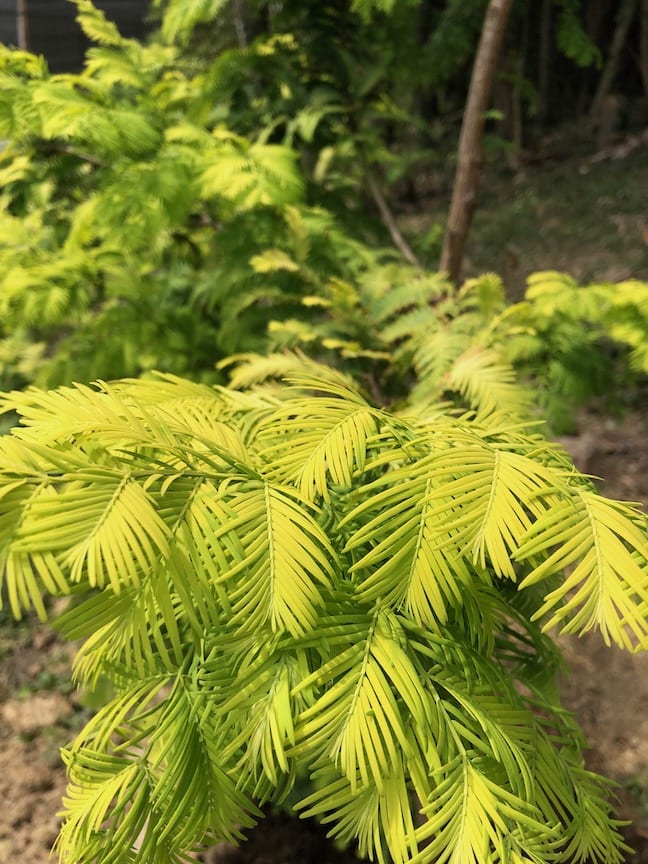
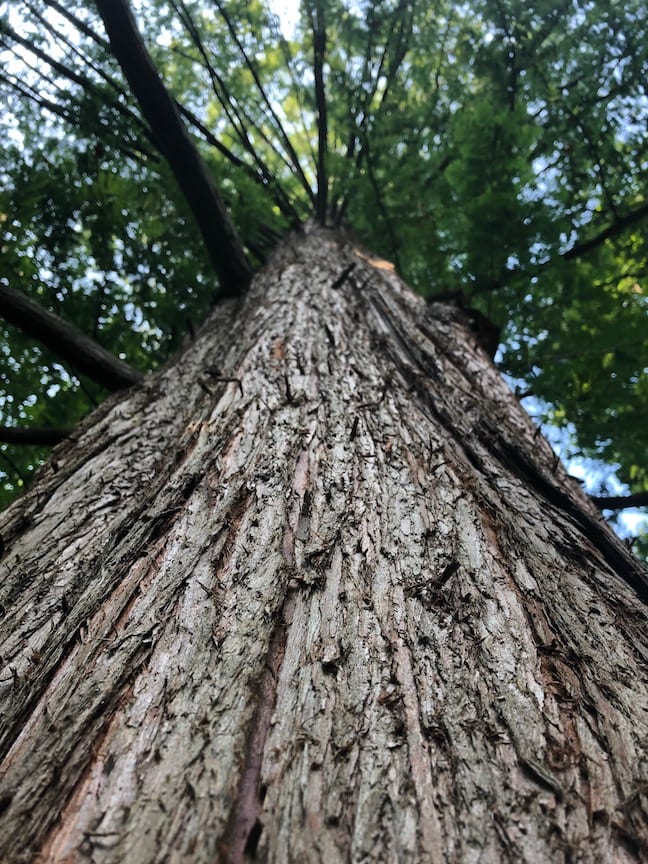
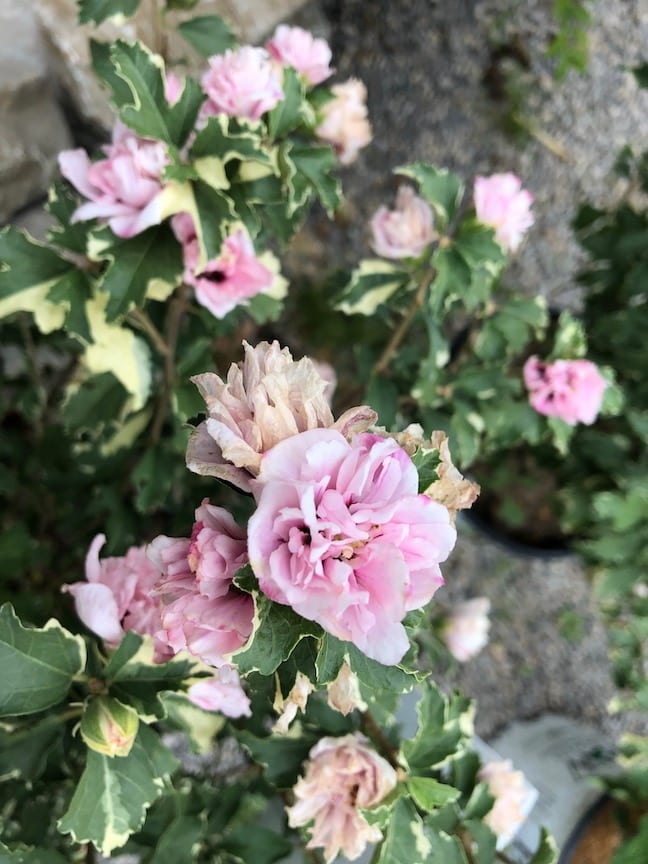
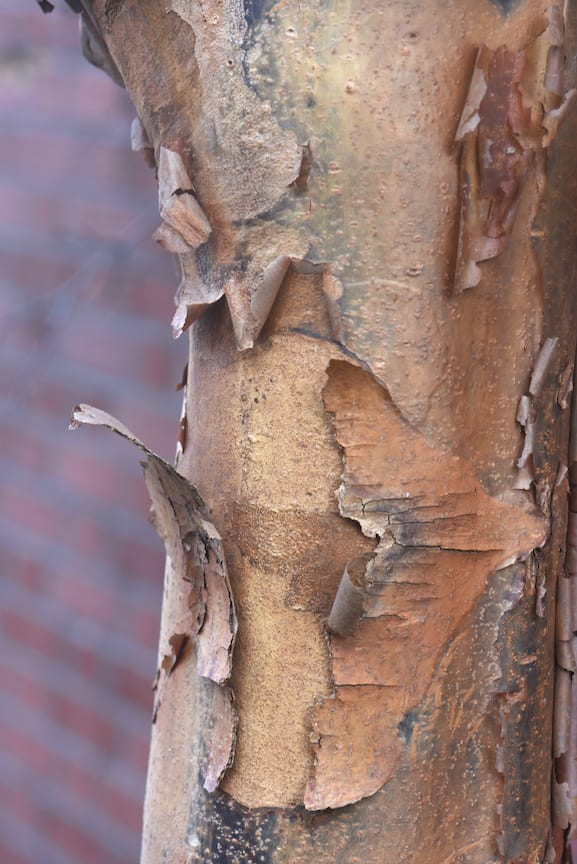
Doug’s Favorite Trees
Dawn Redwood
The aforementioned dawn redwood. These are deciduous conifers that lose their needles (technically leaves) each winter. Dawn redwoods are quick growers that will reach 100 feet at maturity and have beautiful, reddish exfoliating bark. ‘Gold Rush’ also has chartreuse leaves.
Sugar Tip
If you’re in the market for a stunning version of rose of Sharon, take a look at ‘Sugar Tip.’ The tree is only supposed to reach six feet tall and wide, but I’ve seen them get a little bigger. It sports pretty, creamy, white and green variegated foliage and stunning, double pink blossoms. Best of all, it’s sterile and won’t throw seeds everywhere.
Stewartia
Stewartia trees are underused in the landscape. It’s a medium-sized tree, sometimes getting over 30 feet tall. Beautifully shaped with white, peony type flowers in early summer and a nice exfoliating bark for winter interest.
Kousa Dogwoods
Kousa dogwoods bloom later than our native varieties with white star-shaped flowers. There are many cultivars including some with variegated foliage, deep pink flowers. They come in many sizes.
Japanese Maples
Japanese maples cover the gambit with size, shape and color. They are easy to grow and can add interest to the landscape.
Paperbark Maple
The tan peeling bark of a paperbark maple is a star of the garden year-round. It’s a slow grower that eventually reaches 30 feet. Easy and fun to grow.

[…] Our love for trees, how to plant the cherish them. […]